BENAMAUREL; PAST AND PRESENT TROGLODYTES
CHRONOLOGICAL COMMENTARIES ON THE CAVES
The use of caves goes back to prehistoric times when people used them as natural dwellings taking advantage of what nature provided.
Perhaps it was in caves where mankind's mind began to develop faster along its evolutionary path and its soul began to awake, due perhaps to the shelter that the stable temperature of the caves (16-18ºC) provided, or to the tranquillity of the cave as a defensive site making it difficult for wild animals or enemies to penetrate. Primitive cave paintings testify to this, and artistic manifestations in stone, bones, animal horns etc. are still conserved today.
During the Palaeolithic age, caves were the place par excellence where people initiated their deeper social development due to the necessity of correcting the differences of character and personality of the human beings who coexisted, shoulder to shoulder, several families together, generation by generation.
To all this it is necessary to add the influence of the use of the fire, an endless resource at that time. From remote times throughout the middle ages and now in modern times, we still continue to use fire in our famous caves and as visible proof of this we have the famous artistic wood fireplaces, above all in the Altiplano region of Granada, the Alpujarras etc, where people gather around the fire, hold constructive meetings and indulge in chats with their friends, accompanied of course, by good wine and typical Spanish snacks (tapas).
Fire is also good company for people who need to temper their sadness with its warm hug, or to read a good book, or to meditate perceiving the breath of the purifying fire, or to roast potatoes, lamb chops, to cook rice, Spanish bread crumbs (migas) , etc. and all this over the fire. Doesn't this make your mouth water, dear reader? If not, then you have either just eaten or you are a vegetarian!
THE CAVES IN THE MIDDLE AGES
It was at this time when the construction of the caves acquired its greatest splendour with the arrival of the ALMOHADES, 12th century Muslim invaders from North Africa...
THE CAVES IN BENAMAUREL
The cave in Benamaurel has been and is par excellence the cosiest and most comfortable house that exists. Once improvements or suitable reforms of ventilation and lighting have been made, there is nothing in a normal house that one would miss. Nowadays the cave has all the basic elements of comfort of any other house: drinking water, electricity, television and Internet.
The troglodytic tradition of Benamaurel comes to us as a legacy from the Almohades who brought their living customs with them from North Africa , although there are signs of previous dwelling-caves in the Argaric culture of the Bronze Age that are not exactly classed as a source of troglodytic inspiration.
But we modern troglodyte enthusiasts should not think that we are alone in just a few provinces of Andalusia and in some other regions of Spain. There is a census of around 50 Million people (families) residing in caves around the world: China, India, Turkey, Pakistan, Ethiopia, Nigeria, the U.S.A, Latin America etc. In Spain, the most populated province is Granada, including the Grenadine plateau (Altiplano), regions of Guadix, Baza and Huéscar.
In Benamaurel until the 1960's, more than 80% of the people lived in caves, up to the point that the majority of small businesses were located in caves. There was one famous bar called "Bar La Cueva" run by Juan Seta. It was only when they began to connect drainage systems and install the potable water network and build council houses that people began to vacate almost all the caves in the village and some of the others in the surrounding areas, leaving them to keep animals in or to be used as storehouses; this was the start of troglodytic decline.
Starting in the 1980's, a few enthusiasts, lovers of caves, decided that rehabilitating the caves could provide the ideal dwelling. In Benamaurel, the taste for living in caves was acquired once more. Indeed a new wave of troglodyte tourism began, albeit somewhat later in other localities like Guadix, and Galera mainly. Nowadays to reserve a cave for dates such as Christmas, Easter, Public Holidays etc., you must book up to three months in advance.
PROCEDURES FOR THE CONSTRUCTION OF CAVES
The first thing our robust, patient and seasoned ancestors did was to find some high hills of great consistency. Once the necessary tests had been done, they started to clear the side of the hill of vegetation with hoes, picks and other tools, dragging the vegetation down the hill. As they started from the top, the material to be disposed of rolled down by lateral gravity to the bottom of the hill making this arduous work easier; we must not forget that all this was done manually. Once the organic layer was removed, they proceeded to construct the entrance to the future cave. They cleared away loose dead earth until they reached a more consistent and firm layer.
With this firm earth began the arduous task of perforating the earth with picks and then removing it until they obtained a vertical wall of about 4 metres high and 8 metres wide. Logically however, this depended on various factors and circumstances, as no two caves are alike, the same as no two artists paint the same or no two sculptors sculpt the same.
The technique was to design the vertical plane to be able to make the entrance to the cave and to leave clear the maximum of space on both sides of the main entrance to later make rooms with windows to the outside. In this way, sunlight was let in as logically centuries ago there was no electricity. In addition, the question of ventilation was of prime importance.
Above the entrance, some 2 metres up the hill, the cave builders dug some small channels/ditches, whose function was to channel the rainwater to run down the hill to areas away from the cave. In this way, they avoided the danger of the front of the cave being worn away by erosion, and avoiding also humidity and abundant mud from soiling the entrance, because later this was to be whitewashed. At the same time, this stream of water was used to water small gardens and in some caves to fill the water cisterns for the cattle.
A good entrance is important but NOT ESSENTIAL in determining the quality of the cave.
CONSTRUCTION OF THE CAVE
The main entrance of the cave was made once the front of the cave had been constructed and smoothing/levelling it with the picks. This entrance was quite small so tall people had to bend their heads, although it was sufficiently high enough for horses, mules donkeys etc. without saddles to go in and out. The windows were rather small, 40cm x 50 cm, and were well orientated to allow sunlight to enter without the isothermal condition of the cave undergoing very abrupt changes.
Once the measurements of the entrance were done, the workers started to excavate with picks to form the first wall of the entrance hall of about 0.80 to 1.5 meters wide, depending on the resistance or robustness of the ground.
THE VESTIBULE
The first room to be formed, after passing through the front entrance, was the hall or vestibule, or the room where the door was, the so-called reception area or area of transit. The dimensions depended on the ground in question and other circumstances the future cave-dwellers considered necessary (on an average the measurement was 2.8 metres wide, 4 meters long and 3.5 meters high).
This first room after passing through the front door was usually wider and higher than the other rooms. In the vestibule, they prepared the potatoes, fruit, grain and vegetables before they were stored away in cupboards and pantries. They also hung up quinces (Cydonia oblonga) and other fruits (kakis/persimmons, grapes, haw fruit, pears etc. that had to last until winter. They also hung up all kinds of sausages, hams etc. that made your mouth water as soon as you came in or left the cave.
My grandfather used to put seeds of cucumber, melon and pumpkins in socks and stockings and hang up them in the vestibule since this was the driest place in the cave and there was no risk of fungus or attack by insects. In addition, when the seeds were dry he put lumps of sulphur on them that he had collected himself from the entrance to the sulphur mine.
As this food and fruit were hung high up on the wall and even from the ceiling, they did not interfere with the coming and going of people and were protected from domestic animals, rodents and children (that is from some children, but not so in the case of my brother Paco and I. Tired of trying to reach up standing on chairs, we used to grab the cats and throw them up the wall or ceiling and trying not to fall, they hung onto the sausages, which fell to the ground After that, if the sausages were still fresh, we went running outside to eat them with our friends who had the bread and the fire ready.
Needless to say it was in the vestibule where the pig was hung up during the traditional slaughtering time that started with the arrival of the cold weather, from the end of November until January. In this vestibule, it was colder than the rest of the cave because it was the first room in the house and furthermore where the front entrance door, which was usually divided into 2 parts, allowed the cold to enter during this freezing part of the winter.
The ceilings were only made level/flat when the land permitted, i.e. there was some good gypsum or a very hard layer of earth above. Although the Almohades of the XII-XIII centuries apparently did have sufficient technical knowledge to construct flat ceilings, the technique has now been lost and today concave ceilings are constructed, reducing the width between the two walls to 2.4 metres. This avoids the danger of any movement of earth or landslide caused by earthquakes etc., so the weight of the ceiling does not cause it to fall onto the centre of the room but on the strong walls called "shoulders".


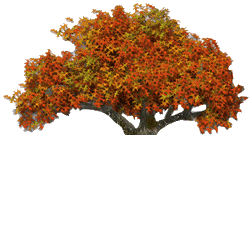
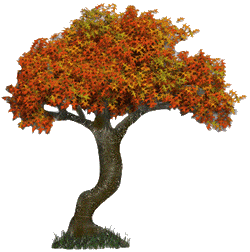
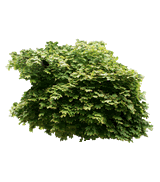
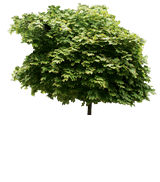

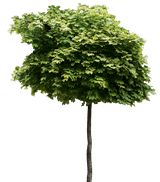
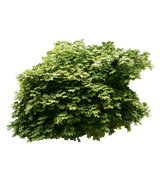
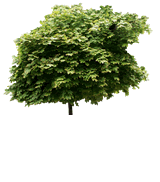
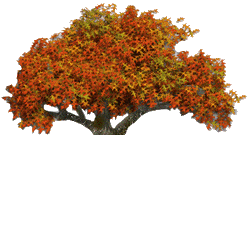




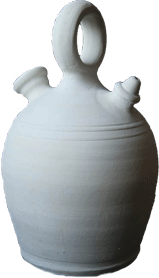



© www.tucueva.com - - This page has been optimized for Internet Explorer 1024 x 768
